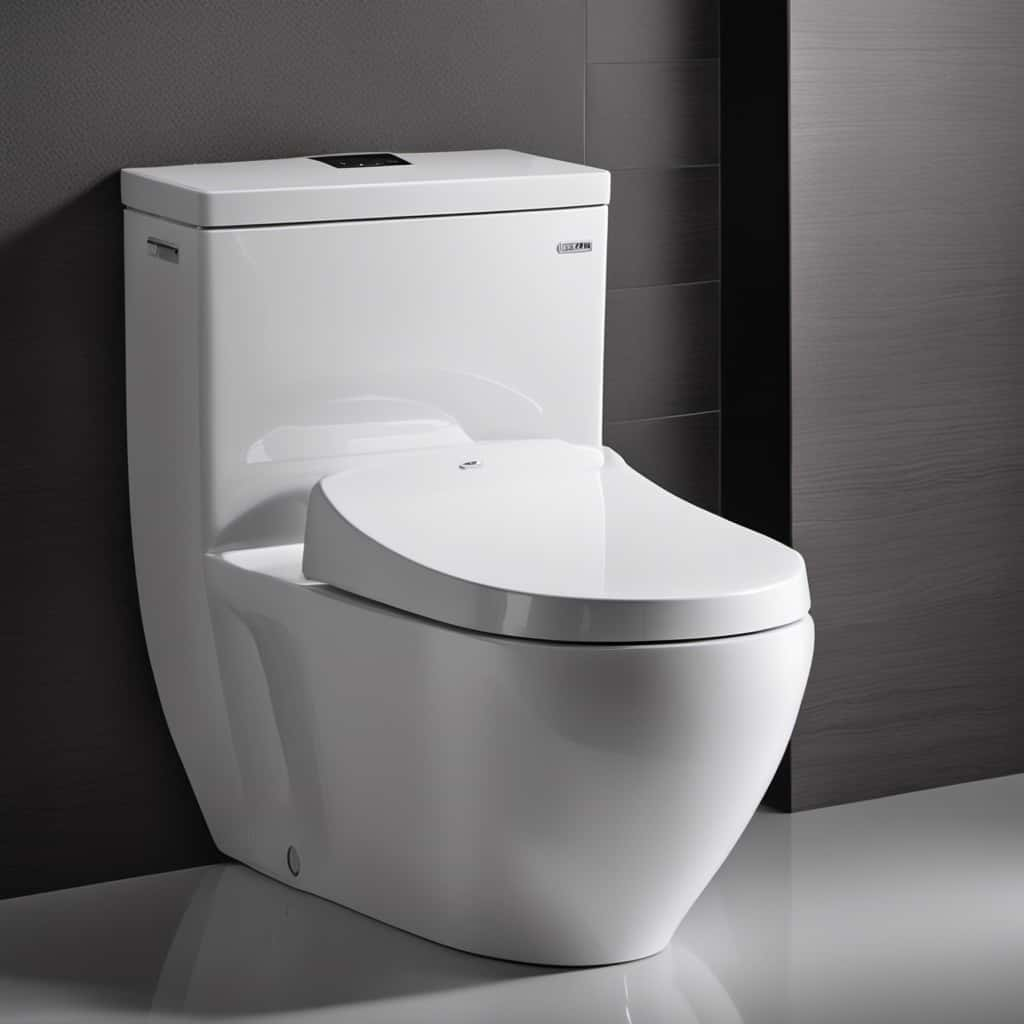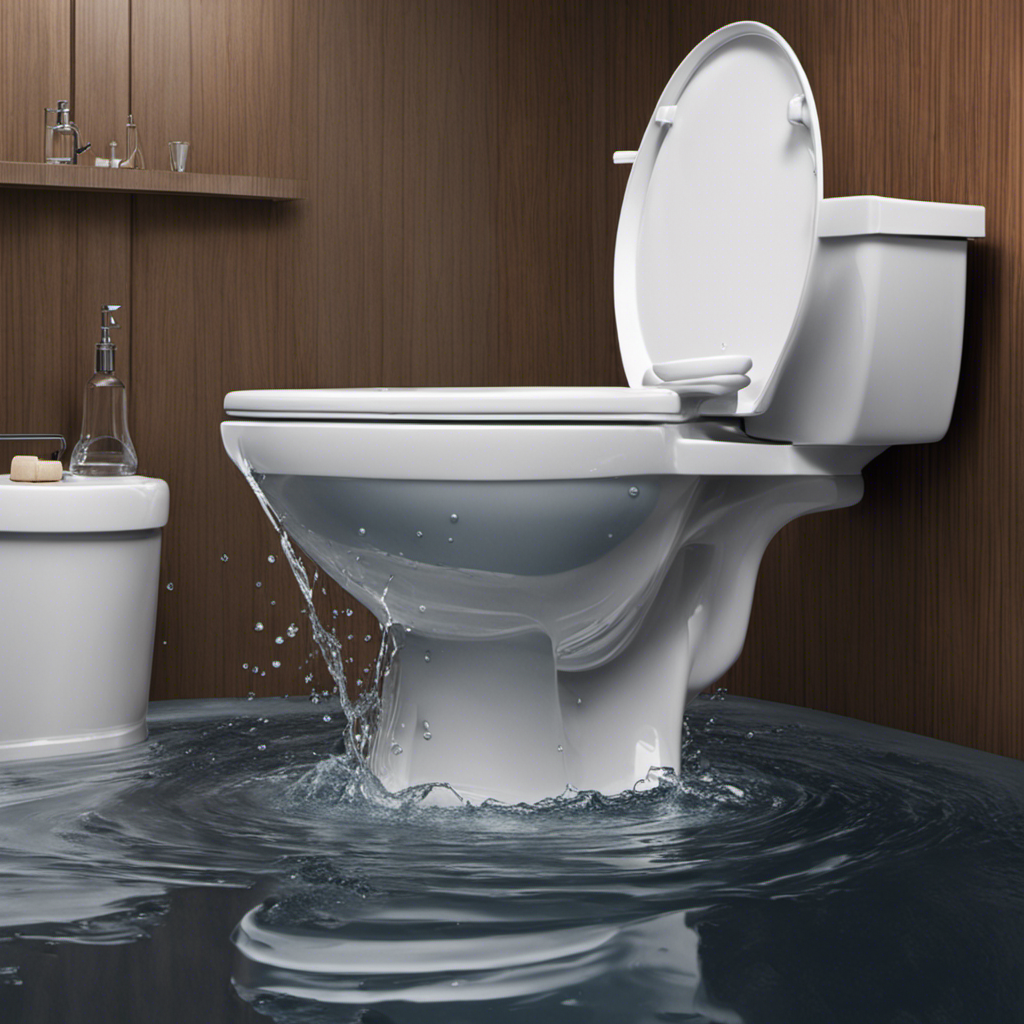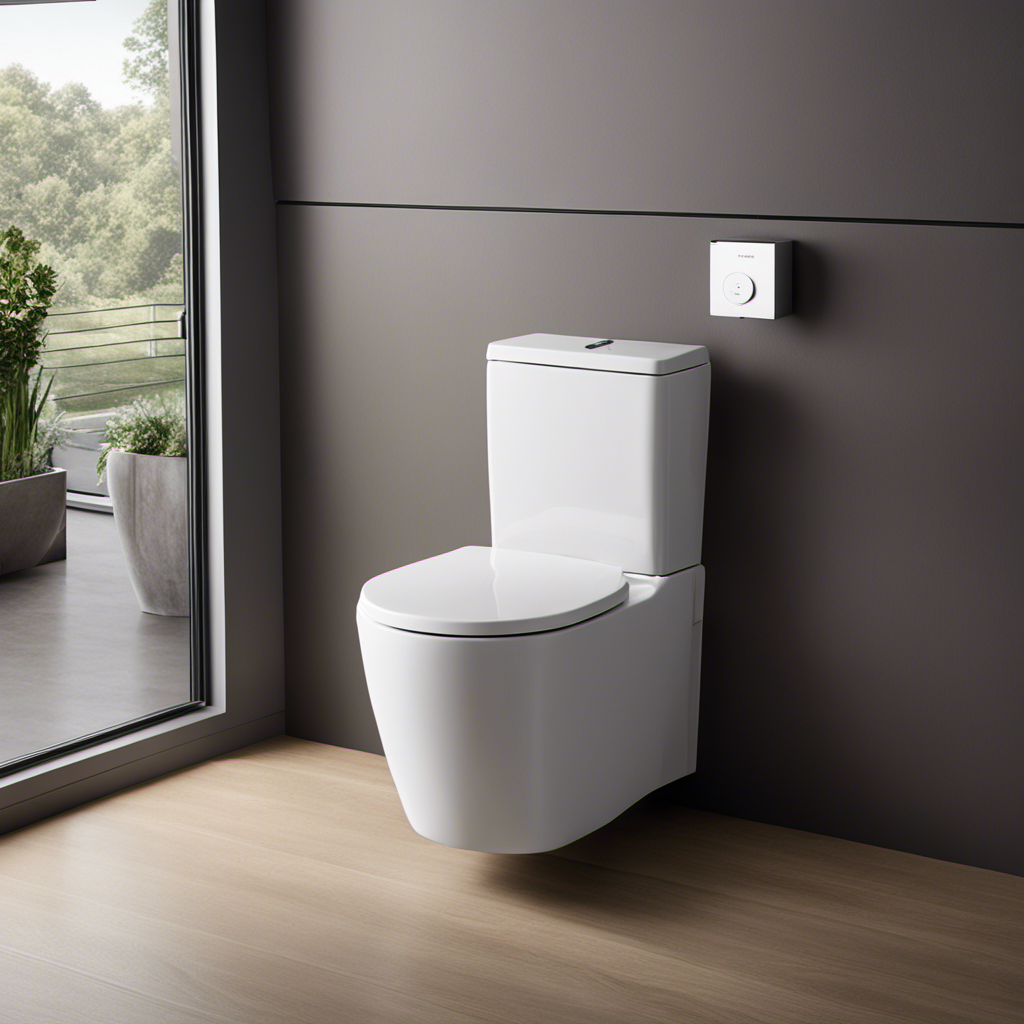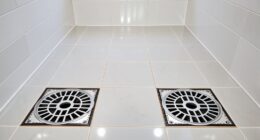Envision a toilet so blocked and obstinate, reminiscent of a mule’s defiance, it wouldn’t clear regardless of our efforts.
But fear not, for we have the power to unclog it without the help of a plunger.
In this article, we’ll explore a range of alternative solutions that will leave you feeling like a plumbing master.
From baking soda and vinegar to a trusty wire coat hanger, we’ve got you covered.

So let’s dive into the world of unclogging toilets like pros!
Key Takeaways
- Baking soda and vinegar can be used as a natural and chemical-free alternative to a plunger.
- A wet/dry vacuum can be a versatile tool for effective clog removal.
- A toilet brush can serve as a surprisingly effective alternative to a plunger, especially when combined with dish soap.
- Rubber gloves can be used to manually dislodge stubborn clogs in a toilet bowl.
Baking Soda and Vinegar
One effective alternative to a plunger that we can use is by combining baking soda and vinegar. Baking soda, also known as sodium bicarbonate, has various benefits when it comes to unclogging drains. Its alkaline properties help to break down organic matter and dissolve grease and grime.
When combined with vinegar, which is an acid, a chemical reaction occurs that produces carbon dioxide gas. This gas creates pressure inside the drain, effectively pushing out any blockages. The bubbly mixture also helps to dislodge debris and clear the pipes.
Baking soda and vinegar can be used for various applications, including clearing clogged sinks, showers, and toilets. It’s an inexpensive and eco-friendly option that can be used as a first-line solution for minor drain blockages.
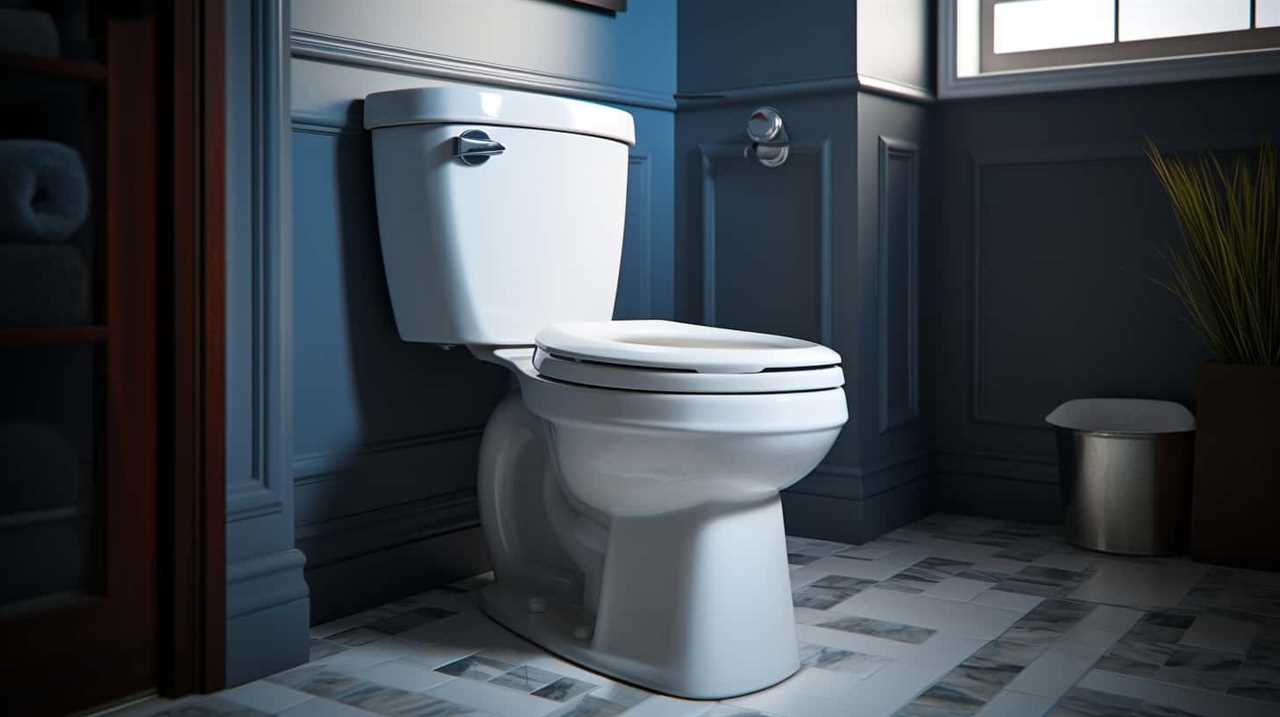
Hot Water
When it comes to unclogging a drain without a plunger, hot water can be a great alternative. Boiling water can be poured directly into the drain to help break down any grease or debris that may be causing the clog.
It’s important to use caution when using hot water, as it can cause damage to certain types of pipes.
Additionally, mixing hot water with soap can create a powerful solution that can help loosen and remove stubborn clogs.
Boiling Water Alternative
We can use hot water as an alternative to a plunger. When faced with a clogged drain, boiling water can be an effective tool to dislodge the blockage. Here are some safety precautions to keep in mind when using this method:

- Protective Gear: Wear heat-resistant gloves to prevent burns while handling boiling water.
- Proper Pouring Technique: Carefully pour the hot water into the drain to avoid splashing or spilling.
- Water Temperature: Ensure the water is hot, but not boiling, as boiling water can damage certain pipes.
- Repeat if Necessary: If the clog persists, repeat the process to further loosen the blockage.
Soap and Water Hack
To unclog a drain without a plunger, we can try using a simple soap and water hack with hot water. This method is effective because soap helps to break down grease and grime that may be causing the clog, while hot water helps to melt away any blockages.
The benefits of using soap and water in this hack are twofold: the soap acts as a lubricant, making it easier for the hot water to flow through the pipes, and it also helps to clean the pipes, removing any buildup that may lead to future clogs.
Additionally, there are alternative soap hacks that can be used in this situation. For example, mixing baking soda with liquid dish soap can create a powerful cleaning solution that can help to dislodge stubborn clogs.
Wire Coat Hanger
When faced with a clogged drain and lacking a plunger, a wire coat hanger can serve as a viable alternative unclogging method.

The benefits of using a wire coat hanger include its flexibility and ability to reach deep into the drain to dislodge blockages.
Alternative Unclogging Methods
For unclogging drains without a plunger, a wire coat hanger can be a useful tool. Here are some alternative unclogging methods using a wire coat hanger:
- Baking Soda and Vinegar: Start by pouring boiling water down the drain. Then, mix equal parts baking soda and vinegar and pour it down the drain. Let it sit for 15 minutes before using the wire coat hanger to dislodge the clog.
- Straighten the Hanger: Unwind the hanger and straighten it as much as possible. Bend one end into a hook shape to use as a tool.
- Remove the Drain Cover: If your drain has a cover, remove it using a screwdriver or pliers to expose the clog.
- Fish Out the Clog: Insert the hooked end of the wire coat hanger into the drain and carefully maneuver it to hook onto the clog. Gently pull it out, making sure not to damage the pipes.
Remember to always exercise caution when attempting to unclog a drain, and if the clog persists, it may be time to call a professional plumber.
Benefits of Using Hanger
We found that using a wire coat hanger as an alternative unclogging method has several advantages. Not only is it a DIY drain unclogging solution that is easily accessible and cost-effective, but it is also highly effective in removing clogs. The wire hanger alternative allows for precise maneuvering and reaching deep into the drain to dislodge the blockage.

To better illustrate the benefits of using a wire coat hanger, here is a table highlighting its advantages:
| Advantages of Using a Wire Coat Hanger |
|---|
| 1. Accessibility |
| 2. Cost-effective |
| 3. Effective in removing clogs |
| 4. Precise maneuvering |
| 5. Reaches deep into the drain |
Dish Soap
Using dish soap as an alternative to a plunger has proven to be effective in unclogging drains. Here are a few reasons why dish soap can be a useful tool in this situation:
- Dish soap creates a slippery surface, allowing the clog to move more easily through the pipes.
- It helps to break down grease and grime that may be causing the blockage.
- Dish soap can be mixed with vinegar and water to create a powerful solution that can dissolve stubborn clogs.
- Another option is to combine dish soap with saltwater, which can help to loosen and dislodge the clog.
When using dish soap, it’s important to let it sit in the drain for some time before flushing with hot water. This will give it enough time to work its magic and clear the blockage.
Remember to use a plunger or other tool if the clog persists.

Wet/Dry Vacuum
To unclog a drain without a plunger, one option is to utilize a wet/dry vacuum. A wet/dry vacuum is a versatile tool that can be used for various cleaning tasks, including unclogging drains. One of the benefits of using a wet/dry vacuum is its powerful suction, which can effectively remove clogs from drains.
To use a wet/dry vacuum for unclogging a drain, first, ensure that the vacuum is set to the wet mode. Then, place the vacuum hose directly over the drain opening and create a tight seal. Turn on the vacuum and allow it to suck out the clog.
Alternatively, you can also use a wet/dry vacuum as a soap and water alternative. Simply fill the vacuum with a mixture of soap and water, and use it to clean and sanitize surfaces.
Now, let’s move on to the next alternative method: the toilet brush.
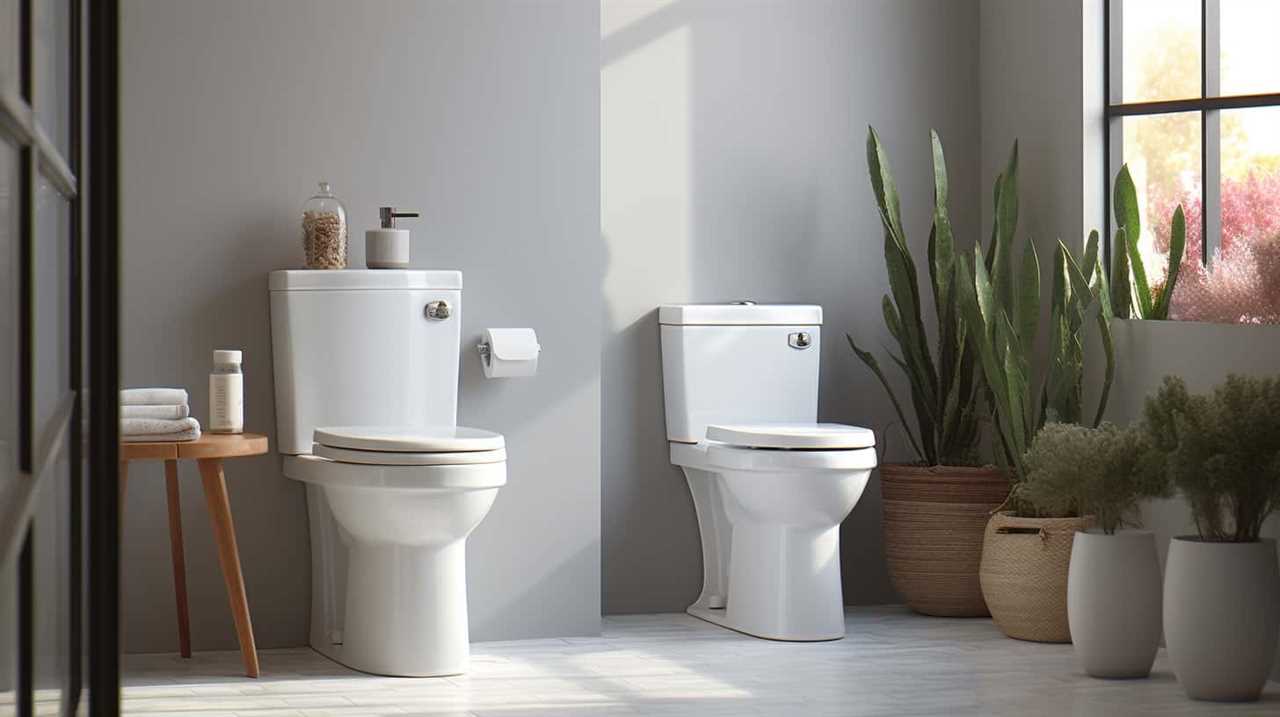
Toilet Brush
Now, let’s delve into the option of using a toilet brush as an alternative to a plunger. While it may not be the first thing that comes to mind, a toilet brush can be surprisingly effective in unclogging a toilet.
Here are some advantages of using a toilet brush as a plunger alternative:
- Versatility: A toilet brush can be used not only for cleaning the toilet bowl but also for dislodging minor clogs.
- Reach: The long handle of a toilet brush allows you to reach deep into the toilet trap to break up the clog.
- Agitation: By vigorously scrubbing the toilet bowl with the brush, you can create enough agitation to loosen and dislodge the clog.
- Dish soap enhancement: To further enhance the effectiveness of using a toilet brush, consider adding a few drops of dish soap into the toilet bowl. The soap’s lubricating properties can help break up the clog more easily.
Using a toilet brush as a plunger alternative may not always be the perfect solution, but it can be a handy tool in a pinch.
Rubber Gloves
When we encounter a stubborn clog that can’t be easily resolved with a toilet brush, another option to consider is using rubber gloves. Rubber gloves can be an effective tool for clearing clogs in the toilet without the need for a plunger.
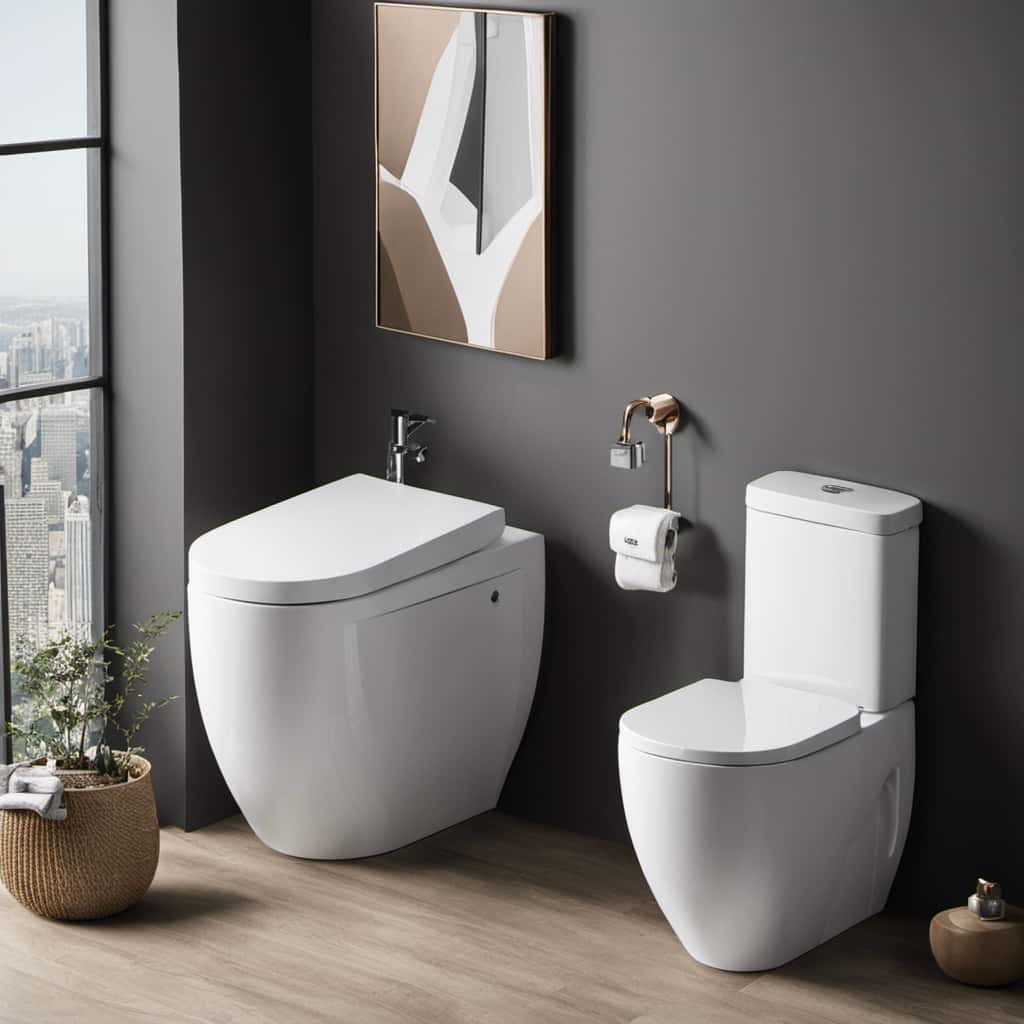
To use rubber gloves as a plunger alternative, start by putting on a pair of thick rubber gloves. Next, reach into the toilet bowl and locate the clog. Using a firm grip, try to break up the clog by applying pressure and pulling it apart. Be careful not to push the clog further into the pipes.
Once the clog is broken up, flush the toilet to see if the water drains properly.
Rubber gloves can provide a sanitary and practical solution for unclogging toilets when a plunger isn’t available.
Conclusion
In conclusion, there are several effective alternatives to a plunger for unclogging drains.
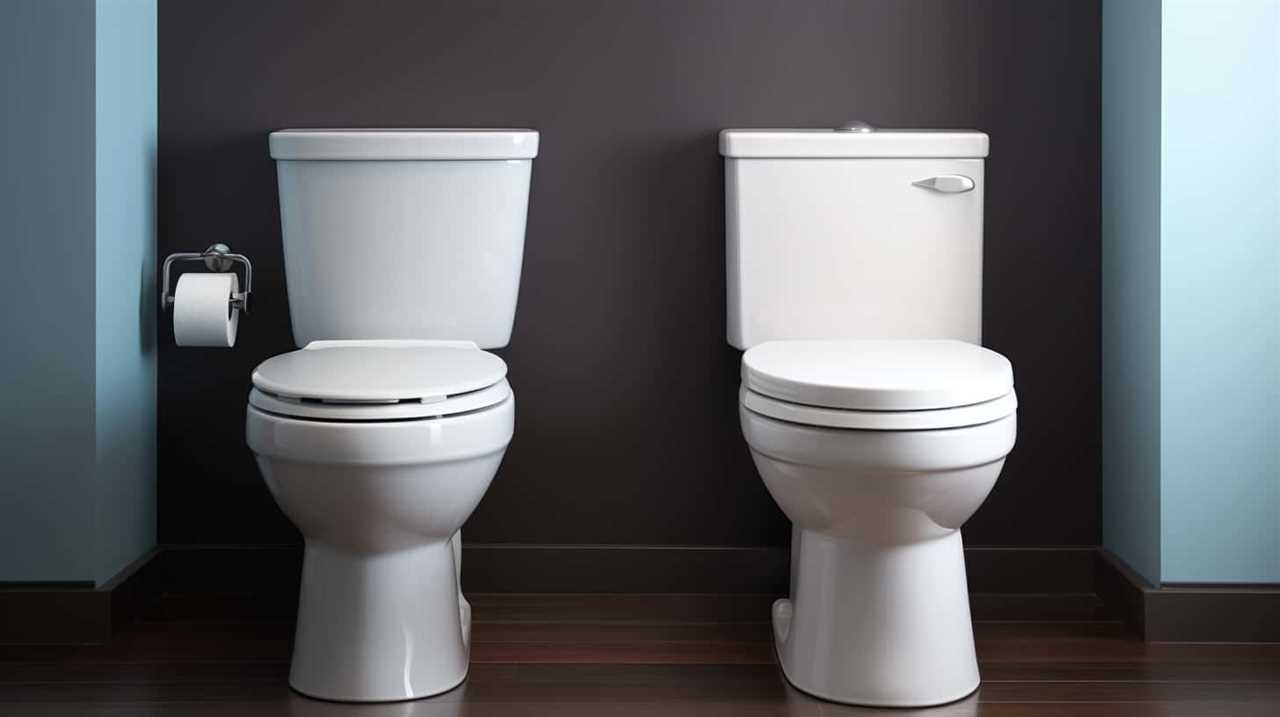
One interesting statistic to note is that using a combination of baking soda and vinegar can clear up to 80% of clogged drains.
This simple and affordable solution isn’t only environmentally friendly but also easily accessible to everyone.
By utilizing these alternative methods, you can quickly and efficiently resolve drain blockages without the need for a plunger.
